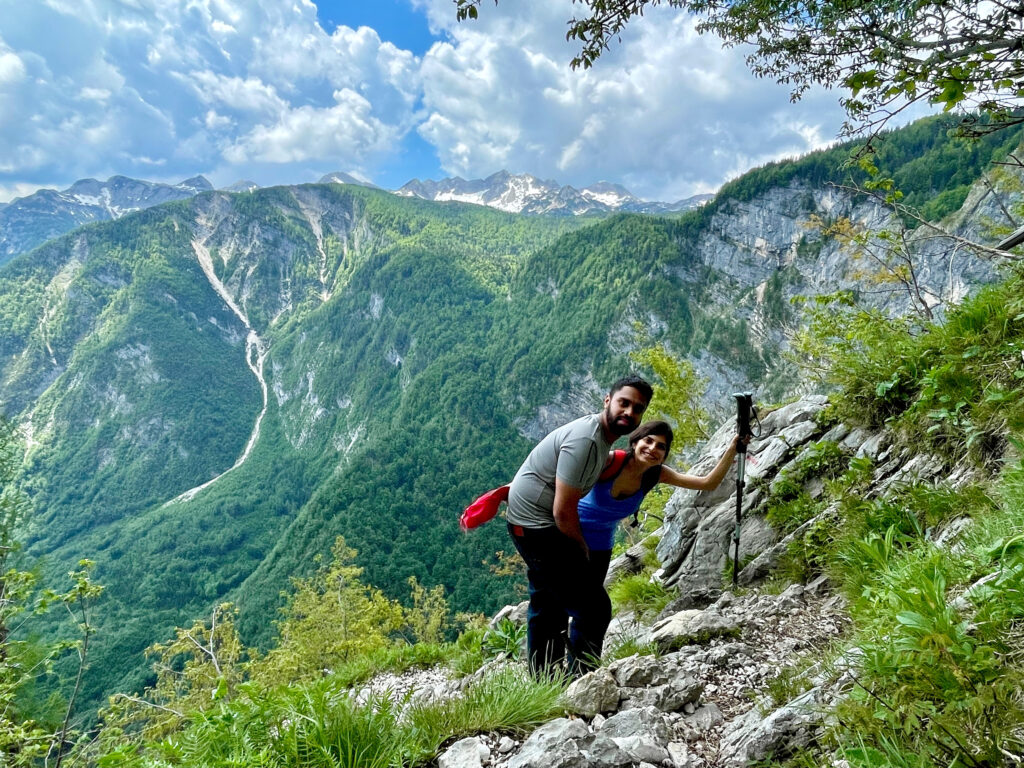I love mountains. I love the people, the energy, and the genuine love for anything that’s outdoors. Yet more and more, I’ve been noticing a trend lately towards regular people like you and me taking greater risks, perhaps too big to handle safely. Although everyone passionate about mountains should feel equally deserving of climbing them regardless of experience, age, or gender, there are ways to minimize the risks.

Choose routes that match your skills
Seriously, do not overestimate your abilities. I’ve spent years walking the same easy trails before I decided to try out technically more demanding routes. I’ve done mountain climbing courses and their winter editions, but then realized somewhere on the way that it was not the adrenaline rush that I was after but the carefree adventure and the pristine nature. I quit climbing with ropes altogether as it would have required the whole me and not just an occasional expedition, and returned back to my preferred hiking routes with safely secured technical spots here and there. I never looked back. It’s the mental comfort I appreciate most in walking paths I know I’m apt to tackle.



Use appropriate gear
One thing is for sure; it’s definitely easier to hike during the summer. Apart from the good old hiking pants, boots, a T-shirt and a cap, you’ll probably want to throw in your backpack also a windproof rain-jacket, fleece, sunscreen, a compass and map, and perhaps even thin gloves, a neck-warmer and a hat, while also water and food for the day.
Winter climbs, even in the seemingly summer-like conditions without snow, require appropriate gear and the knowledge of using the right pieces in the changing terrain. The minimum you’ll need is mini crampons, but more likely the whole pack of safety essentials: full-size crampons, an ice axe, a helmet and avalanche safety gear including a beacon, a probe, and a shovel. The nice-to-have winter accessories are definitely gaiters and an avalanche airbag backpack, while also winter apparel like snow pants, warm socks, base layers, a hat, gloves, and winter hiking boots shouldn’t be missing.
Read also:
Hiking in Slovenia: the gear you will need
Safe winter trails that will blow your mind
Visoki Mavrinc, a gorgeous and safe peak above Kranjska Gora


Plan your hike
Read about the trip, talk about it, estimate the time you’ll need to finish it safely, check the weather forecast, start early and pack a headlamp with extra batteries for longer trips, bring enough food and water, and inform your friends and family about your hike.

Rethink sunrise hikes
Those ridiculously amazing sunrises and sunsets. Like a spectacle of their own, seeing one cannot leave you unaffected. If truth be told, to climb a mountain before sunrise or at least a good part of it, you need to know the trail really well. A good sense of direction in the dark is a different story than during the day as you can easily get lost or have a nasty fall.

Guided adventures
High mountains have fuelled hiker dreams for decades. There is, as always, a catch: can you climb it safely? There’s a thin line between fearless and careless, but can you tell you’ve crossed it until it’s too late? As much as we like doing everything on our own, and I am no exception, there might be situations where we owe it to ourselves and to our loved ones to accept the fact that we need help. Mountains, particularly in winter, are a place for skilled mountaineers. You want to climb them anyway? Do it safely with a mountain guide.
Check out Exploring Slovenia’s most popular guided treks:
Triglav Lakes Trek
Triglav from Pokljuka
Mrežce, a gorgeous peak above Bled




Stay tuned for more outdoor adventures! Join eighty thousand Exploring Slovenia fans by liking us on Facebook, Twitter, and Instagram. If you enjoyed this story, sign up for the monthly exploringslovenia.com/blog newsletter. A handful selection of stories from Hiking and Climbing in Slovenia, delivered to your inbox every month.
Looking for a gorgeous tour in the mountains? Exploring Slovenia offers guided hiking and climbing tours!





